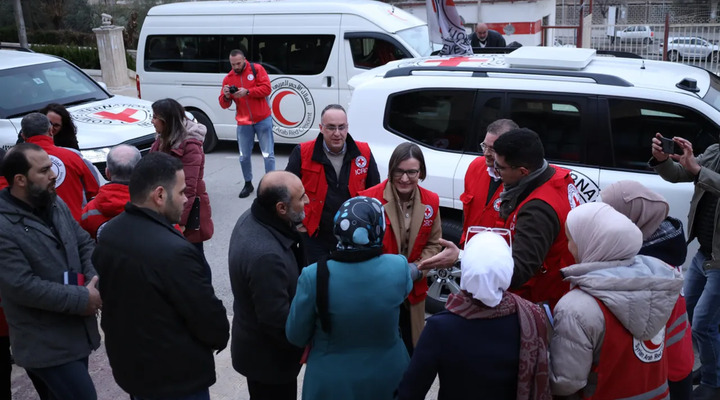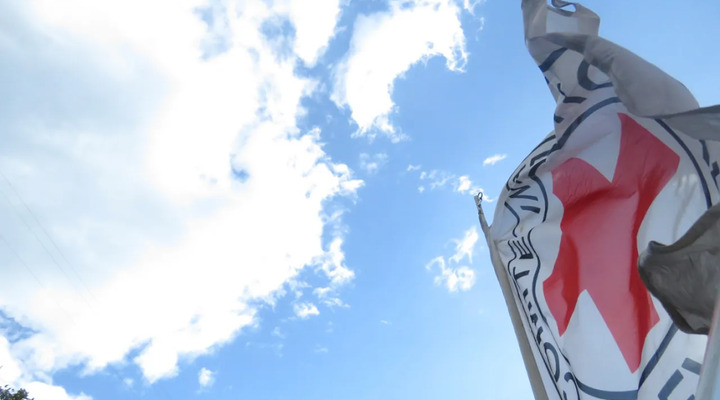Health-care workers & patients suffer thousands of attacks on health-care services the past 5 years, ICRC data shows
Health-care workers and patients have suffered through thousands of attacks on health-care systems five years on from the U.N resolution calling for an end to impunity for such attacks (3 May 2016). This is seen in the data recorded by the International Committee of the Red Cross (ICRC) in countries affected by conflict and other emergencies.*
“How would my work be if I didn't live in a conflict zone? I would leave my house without fear. I could go to bed without worrying whether someone will come to my door, threaten me or break down my door,” states a Colombian ambulance driver.
In 2020 in Colombia, there were more than 300 attacks on medical personnel throughout the country, the highest rate of violence in more than two decades.
Since the adoption of the UN Resolution, the ICRC counted 3,780 attacks during the five years between 2016 and 2020, in an average of 33 countries each of those years. This makes an annual average of 756 incidents - of attacks, threats, gunshots, fires, kidnappings, shellings, killings and directed violence - that target health-care workers around the world.
In Olo Ambolong village in Marawi City, Philippines, midwife Rakila Guro recalls the ransacking of their health station at the height of the 2017 conflict there. “We lost the microscope, the birth delivery seat, glucometer, the blood pressure apparatus - even the nebulizer was gone. I used to have all the basic instruments. They were all gone.”
Violence also acts as a barrier to people seeking health care. In Burkina Faso, when Alidou Sawadogo’s elderly mother fell ill, he faced a long and dangerous journey to get treatment for her.
“When she collapsed, a friend called me,” he explains. “By the time I arrived she was already unconscious. I decided to take her to the health center and luckily someone who had a motorcycle helped me. Because of the violence many people who are sick wait at home and die. Everyone is afraid of taking the road to the health center in Barsalogho.”
Across Burkina Faso, over 800,000 people have little or no access to health care. Dedicated health workers, among them Dr Bertrand Dibri in Barsalogho, are struggling to meet the needs, and to stay safe themselves.
“This is one of the few health centers that isn’t closed,” he says. “We don’t have enough equipment. And the insecurity has caused huge anxiety among health workers.”
While health care is at the forefront of global attention, more needs to be done to protect health care workers and medical facilities. The International Committee of the Red Cross reiterates its call for an end to violence against health-care workers.
For further information please contact:
Jason Straziuso T: +41 79 949 3512 E: jstraziuso@icrc.org
*About ICRC’s health-care attacks data: The data concerning events affecting the delivery of health care was collected from January 2016 through December 2020 by ICRC teams in an average of 33 countries per year where the ICRC has an operational presence, meaning countries experiencing conflict or violence. The data is not meant to be exhaustive but rather representative of what the ICRC sees in locations it works. Because such data collection is often quite challenging, the data is likely an undercount of the true number of attacks and cases of obstruction.
SHOTLIST
On screen credit: ICRC or logo embed as in Broll
Colombia, March 2021
SOUNDBITE Anonymous Ambulance Driver (in Spanish):
0:00 Sí, si tendría temor, si lo tendría, porque tendría mucho temor desde que me pasara algo, ya que algunas veces he viniendo de en ambulancia dejar a un paciente. Muchas veces se encuentra uno. Grupos armados, lo detienen, lo requisan, le preguntan si y se siente uno vulnerado. También muchas veces es amenazado incluso por las personas civiles.
0:30 Cómo miraría mi trabajo si no viviera en un contexto de conflicto? Pues sería mucho mejor, porque saldría de mi casa sin miedo. Podría ir y venir. Y cómo? Sin temor, si podría acostarme tranquilo, sin saber de que me van a amenazar o van a venir a mi casa o van a tumbar mi puerta.”
English translation
0:00 “Yes I’m afraid. I’m afraid of something happening to me. Sometimes when I’m coming with a patient in the ambulance you come across an armed group. They stop you, they search you, they question you and you feel violated. Also many times you get threatened, even by civilians.
0:30 How would my work be if I didn't live in a conflict zone? Well, it would be much better because I would leave my house without fear. I could come and go without fear. If I could go to bed calmly without worrying whether someone will come to my door, threaten me or break down my door.”
0:54 Various of Colombia clinic
Olo Ambolong, Marawi, Philippines, March 2021
SOUNDBITE – Rakila Guro, midwife, Barangay Health Station, Olo Ambolong, Marawi City, Philippines (in Tagalog/ Filipino)
4:30 “We lost the microscope, the birth delivery seat, glucometer, the blood pressure apparatus - even the nebulizer was gone. I used to have all the basic instruments. They were all gone.”
5:28 Various of Bubong Lumbac Clinic, Philippines
Yei, South Sudan February 2021
8:37 No weapons sign and hospital facility Yei, South Sudan
Barsalogho, Burkina Faso, September 2019
9:00 Displaced people in Barsalogho
9:09 Various, mothers and children in clinic
9:18 Various Alidou Sawadogo with ill mother in clinic
SOUNDBITE Alidou Sawadogo (in Mooré)
9:29 “When she collapsed, a friend called me. By the time I arrived she was already unconscious. I decided to take her to the health center and luckily someone who had a motorcycle helped me. Because of the violence many people who are sick wait at home and die. Everyone is afraid of taking the road to the health center in Barsalogho.”
9:54 Various Barsalogho clinic, interiors, exteriors, doctors checking patients, mothers and children waiting
SOUNDBITE Dr Bertrand Dibri Barsalogho clinic (in French)
10:21 “This is one of the few health centers that isn’t closed. We don’t have enough equipment. And the insecurity has caused huge anxiety among health workers. Even coming here to Barsalogho is a huge challenge because the route is so dangerous.”
10:20 Various of interiors clinic, mothers and children
SOUNDBITE Jeanette Kientega, Nurse Barsalogho clinic (in French)
10:59 “By the time they are able to get here, it is often too late. Sometimes we can help, but if they have already been ill a long time, it is difficult. We try to do what we can.”
11:14 Logo
11:24 End
For more footage of health care in danger, click here

